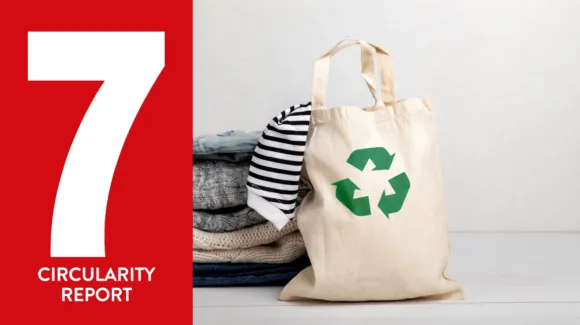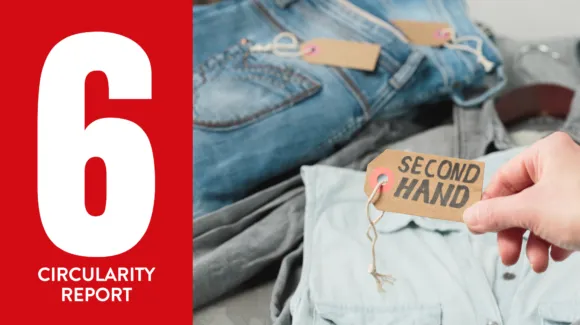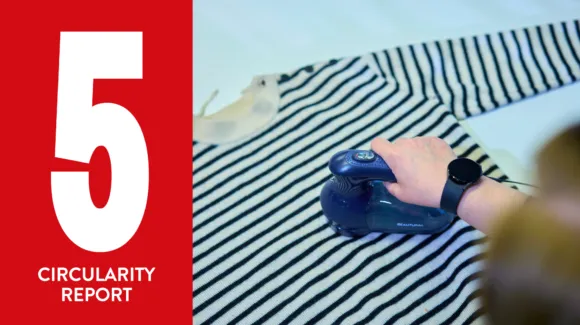Fashion brands have the tools to succeed and play a crucial role in the transition to a circular fashion industry. While circularity requires brands to rethink the way they do business, many of the ingredients for truly circular practices already exist. Take recycling: according to the Textile Exchange Materials report, cotton and polyester remain the most widely used fibre types. This is reflected in the number of existing and in-development technologies that are focused on cotton and polyester recycling. As brands gain a better understanding of the textile recycling landscape, this will influence the design process and help to increase the use of recycled materials. This is a crucial step in creating a more accessible and cost-effective circular model for the fashion industry.
Repair services are another promising pathway toward circularity
Several brands are already adopting repair services. For example, luxury e-commerce company Farfetch has set up a ‘sell, donate and repair’ programme that allows customers to send in used clothing and accessories in return for store credit.
While many fashion and lifestyle brands are looking to adopt more sustainable practices, it can be difficult to know where to start. However, support is becoming increasingly available. At Bleckmann, for example, we have developed RESCUE, a streamlined solution to help brands restore damaged returns to like-new condition – allowing them to be resold and avoiding waste. This can support compliance with existing legislation, such as the ESPR, alongside mitigating the financial losses associated with the disposal of damaged returns.
Designed as a first step towards circular business practices, RESCUE can be easily integrated into a fashion brand’s returns process. It can be added to the existing logistics services that Bleckmann provides to a brand or set up as a stand-alone service.
When we rolled out the RESCUE service with online retailer Otrium, we repaired 50% of their damaged goods. Within seven weeks, 70% of the repaired goods were sold again!
Circularity in fashion is here to stay, and brands that implement circular practices now are likely to have a competitive advantage that can only grow in the coming years. By adopting more durable designs and incorporating recycling and renewal capabilities into their operations, brands can ‘kill two birds with one stone’ by:
- Responding to consumer demand for more durable and sustainable products (the ‘buy less, buy better’ trend),
- Facilitating compliance with current and future regulations.
Fundamentally, fashion brands are not alone
Circularity must be seen through the lens of “ecosystem thinking”; it is driven by collaboration between customers, legislators and brands themselves. After all, there can be no circularity if companies don’t invest in providing it; circular solutions like repair services can’t succeed if customers don’t use them; legislators can’t develop effective regulations without drawing on success stories; and fashion brands can’t embrace recyclability if governments and supply chain partners don’t invest in increasing recycling capacity.

Figure 1: Ecosystem thinking relies on the participation of all stakeholders
Fashion brands can play a leading role in the circularity ecosystem
Brands that implement new practices, technologies and circular services enable several important benefits: they can subtly influence customer behaviour, provide application cases for legislators and peers to learn from and encourage supply chain partners to invest in circularity alongside them. By exerting influence through their relationships with these respective stakeholders, brands help to create positive feedback loops that make it easier to further implement and scale circular business models.
At Bleckmann, we believe that much of the knowledge to support the transition to a circular economy for fashion already exists – in fact, this shift may have already begun. Importantly, the impetus isn’t coming from one source. Fashion brands are encouraging their customers to adopt more environmentally responsible practices, and customers are putting pressure on legislators and businesses to adopt more sustainable policies. Legislators are driving change through reform, but they can be supported in this task through dialogue with business. And supply chain partners like Bleckmann also have a role to play. Through this ‘ecosystem approach’ to regulatory compliance, the fashion industry must analyse its practices across the value chain, from raw material sourcing to waste management and reporting. Together, we can make circularity a reality.
















